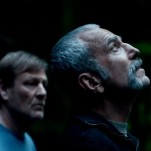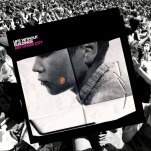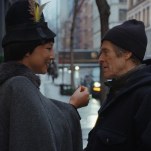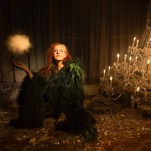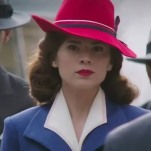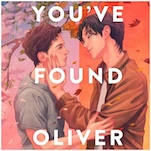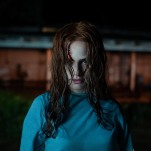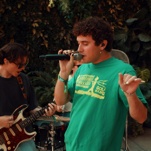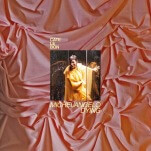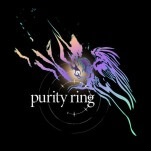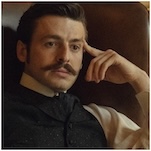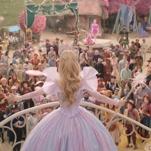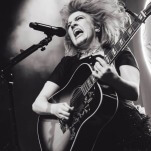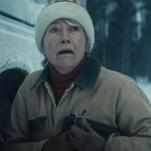V.E. Schwab on the Beautiful Horror that Lurks in the Halls of Gallant
Photo: Jenna Maurice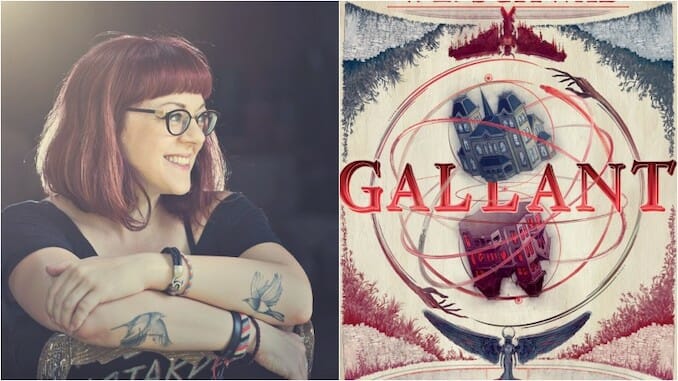
Too often, when we think of horror, we think of things that are not often considered beautiful: Gory murders, decomposing bodies, ghosts with clanking chains, and zombies trailing rotting bits of flash behind them. Horror is supposed to be frightening and, generally, we consider the things we’re afraid of to be things that are also ugly. (Unless they’re vampires, I guess. Then all bets are off.) But the horror genre is also the rightful home of the weird and the odd, the unexpected and the ambitious. Things that, if looked at in the right light, can be strangely and compellingly lovely, even in their blood and decay.
Such is the case with V.E. Schwab’s Gallant, a story of a house haunted by ghosts both literal and figurative and the cursed family that inhabits its walls. A dark fairytale that runs the gamut between cautionary reminder and atmospheric field guide, it’s easy to get swept up in the lush descriptions of both the real Gallant and its dark, foreboding twin, a building on the other side of a garden wall that divides two very different worlds.
“For the first three years I was working on [this book], I thought it was a fairytale. I thought I wanted to tell a fairytale. I had the house. I had the garden wall. I knew there was a wild space beyond that garden wall, but I always just kind of was like, “Well, that’s where the woods are. That’s where the Fae spirits are’,” Schwab explains. “In someone else’s hands, that’s what it would be. I’m a huge fan of authors like Holly Black, who handles the Fae so well. But I just couldn’t shake the feeling that it wasn’t me.”
Instead, Schwab ended up writing a story that is grounded in a dark reflection of our own world, one in which a ragged corpse holds court over a dead house and a rotting garden cries out for fresh blood. It’s horrifying and strangely beautiful by turns, eternal and decaying all at once, a story that primarily exists in the in-between of life and death, and whose images will stay with you long after the final page.
“I’ve always loved liminal spaces,” Schwab says. “Usually, I have to keep them [restricted] to metaphor and motif. For this, I was dealing with a physical doorway and I remember having just an absolute moment of clarity three years into the creative process on this book. I remember watching Stranger Things and I just thought, ‘Instead of a forest beyond that wall, instead of a wild place, what if it is a different version of Gallant itself? What does that mean?’
The story of Gallant is, on the surface, fairly straightforward: Young Olivia Prior longs to find a place to belong. An orphan forced to live at the drab and institutional Merilance School for Independent Girls, she’s often shunned by the matrons and frequently tormented by her classmates because she is mute. (The fact that she alone can see the ghouls that haunt the property doesn’t exactly help make her any friends either.) Her most prized possession is a journal that once belonged to her long-absent mother, scribbled with writings and drawings that don’t shed much light on who Olivia is or where her family came from.
Naturally, when a letter arrives from an unknown uncle inviting her to join his family at their mansion, she jumps at the chance. But when she arrives at the eponymous Gallant, Olivia learns that her uncle is dead, no one remembers inviting her to stay, and the cousin who greets her orders her off the property as quickly as possible. That she doesn’t go shouldn’t surprise anyone, nor should her determination to unravel the mysteries of her family and its history. After all, she’s always been able to see ghosts—what’s a few more? Particularly if she might actually be related to some of them. Plus, there’s something about Gallant and the strange garden wall that her cousin seems to be working himself to the bone to maintain—that he’s sometimes literally bleeding to feed—that sparks Olivia’s curiosity.
“I was very taken with the claustrophobia of this house. The disrepair and the decay,” Schwab explains. “I think the common thread in all my books, is an examination of mortality and the idea of taking life and death from a one-way street into a two-way street. I’m really interested in the porousness of death.”
Schwab reserves her lushest and most descriptive prose for her shadow world, a grim mirror image of ours that for once actually perfectly matches up with the description disseminated in Gallant marketing materials (Crimson Peak meets The Secret Garden). From its delicately rotting surfaces to its hushed, threatening quiet, this dark world within a world is beautifully rendered: half-dream and half nightmare. The unnamed villain at the center of the piece is both horrifying and desolate, a “grotesque” reminder that as much of this is a story full of vibrant life, it is also a tale of the inexorable, inevitable—and necessary—nature of its end.
“Not to be the morbid writer who’s like, ‘Death is beautiful’,” Schwab laughs. “But fall is my favorite season. I do think there’s intense beauty in the cycle and the idea that in nature, things have to go through death in order to come back again. I’ve always been attracted to the fact that there’s so much beauty that comes from that part of the circle.”
The foreboding feel of Gallant also reflects something of the personally dark period in which Schwab wrote the book.
-

-

-

-

-

-

-

-

-

-

-

-

-

-

-

-

-

-

-

-

-

-

-

-

-

-

-

-

-

-

-

-

-

-

-

-

-

-

-

-

